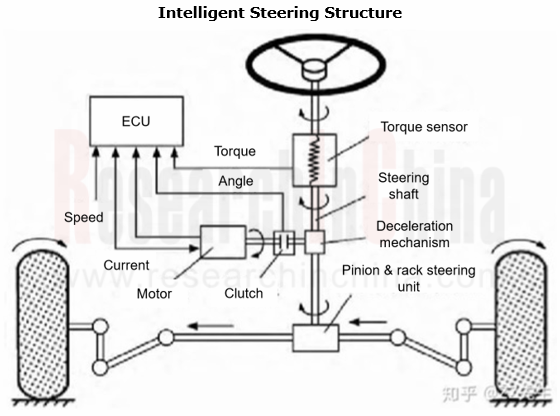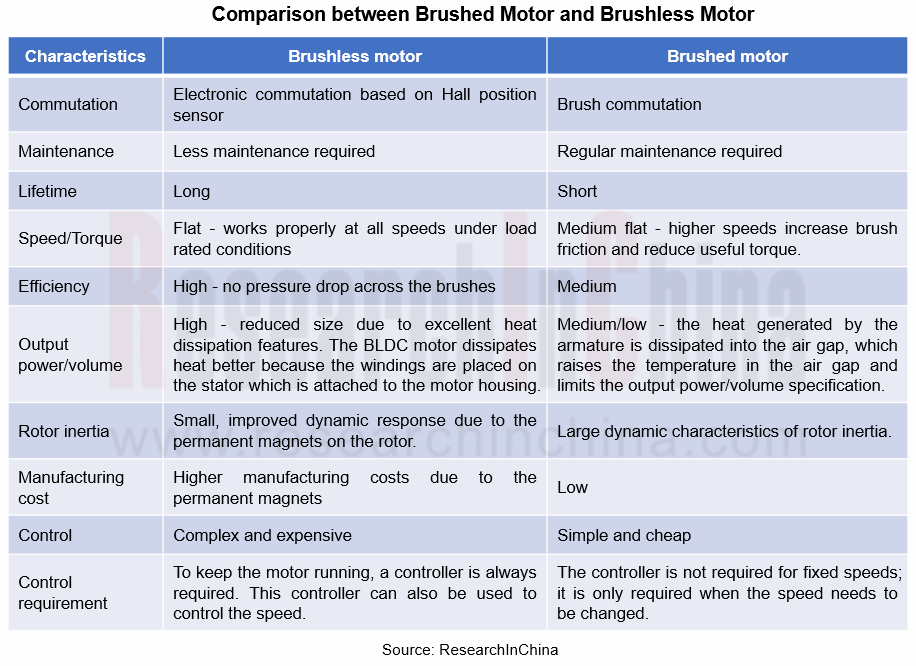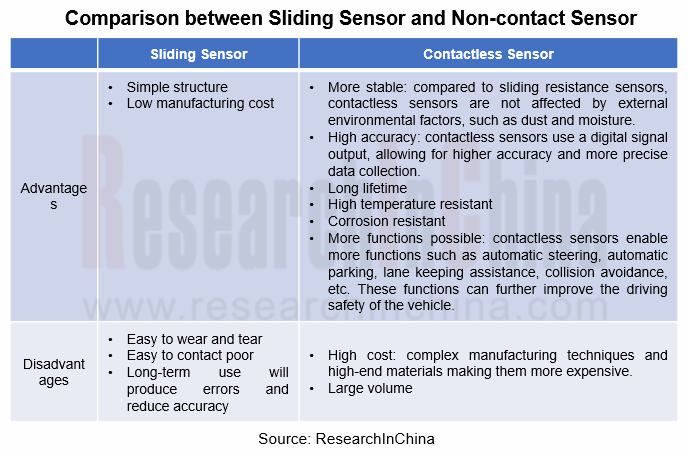Research on intelligent steering key components: four development trends of intelligent steering
The automotive chassis consists of four major systems: transmission system, steering system, driving system and braking system, covering five major parts: drive, gearshift, brake, suspension and steering. Wherein, the steering system passes through the development process from mechanical steering to hydraulic power steering to electric power steering. Nowadays, as intelligent driving technology advances, intelligent steering, namely, electric power steering as an important part of intelligent chassis, is becoming widespread, and steer-by-wire that develops from electric power steering is also being applied.
Based on conventional mechanical steering systems, electric power steering system adds sensor, electronic control unit (ECU) and power steering mechanism, and generates power by controlling the electric motor to achieve steering, which is completely free from the hydraulic power method. The key components of this system are torque sensor, motor and ECU, of which:
?The torque sensor is used to measure the magnitude and direction of the torque applied to the steering wheel by the driver, and to convert the torque into an electrical signal sent to the ECU.
?The electric motor converts the electric energy provided by the battery or generator into mechanical energy, outputs the appropriate torque to the mechanical steering mechanism, and together with the steering gear offers the steering torque to the steering wheels.
?Based on the signals from the speed and torque sensors, the ECU determines the direction of rotation of the motor and the magnitude of current of the booster, so that the motor can provide power steering effects according to vehicle speeds.

Trend 1: steer-by-wire will gradually replace electric power steering
The main difference between steer-by-wire (SBW) and electric power steering (EPS) is that SBW removes the mechanical connection between the steering wheel and vehicle wheels and uses sensors to obtain the steering wheel angle data, and then the ECU converts the data into specific driving force data, so that the electric motor can drive the steering gear to turn the wheels. The EPS, on the other hand, uses an electric motor to assist the driver in steering.
SBW outperforms EPS in response sensitivity and expansibility of intelligent driving functions. SBW not only has all the advantages of conventional mechanical steering systems, but also can optimize angular transmission characteristics, which is difficult for a mechanical system. By virtue of these benefits, SBW systems have become a development trend in the automotive industry.
Trend 2: the gradual shift from brushed motors to brushless motor
Brushless motors generate no electric sparks while running, its most direct difference from brushed motors, which minimizes the interference of electric sparks to remote control on radio equipment. Secondly, without brush, brushless motors enable much less friction, smooth operation, far lower noise and higher operational stability when they run. Thirdly, having no brushes means the wear of brushless motors is concentrated on the bearings. From a mechanical prospective, brushless motors are almost maintenance-free, only needing some dust removal maintenance when necessary. In the long run, brushless motors will thus gradually replace brushed motors.

Trend 3: the transition from sliding variable resistance sensor to non-contact sensor
Sliding variable resistance sensors are a relatively conventional type of sensor. Despite high maturity, this sensor technology also has problems of unstable performance and short service life caused by wear and ageing of the sliding contact surfaces. In contrast, non-contact sensors offer following benefits:
1.Longer service life for insusceptibility to wear and ageing;
2.Higher levels of accuracy and stability;
3.Available in harsh environments, e.g., high temperature and high pressure;
4.Small size, light weight, easy to install and maintain.
Hence non-contact sensors are expected to replace sliding variable resistance sensors and dominate the market in the future.

Trend 4: 32-bit MCUs are replacing 8-bit/16-bit MCUs.
8-bit, 16-bit and 32-bit products prevail in the automotive MCU market. 8-bit MCUs are mainly used for controlling basic functions such as seat, air conditioner, fan, window, and door control module. 16-bit MCUs are generally applied to lower body covering power and transmission systems like engine, e-brake and suspension system. 32-bit MCUs customized for vehicle intelligence are often seen in automotive power system, intelligent cockpit and body control.
In addition, steering system control units are almost monopolized by foreign manufactures such as JTEKT, NSK Ltd, ZF TRW, Nexteer and Sono Koyo Steering, and they are capturing bigger market shares by way of establishing joint ventures and partnerships. For example, the four companies, Aisin, ADVICS, JTEKT and Denso, have respectively combined their competitive hardware such as sensors, steering and brakes with integrated ECUs and established integrated ECU software development companies.
Autonomous Driving Domain Controller and Central Computing Unit (CCU) Industry Report, 2025
Research on Autonomous Driving Domain Controllers: Monthly Penetration Rate Exceeded 30% for the First Time, and 700T+ Ultrahigh-compute Domain Controller Products Are Rapidly Installed in Vehicles
L...
China Automotive Lighting and Ambient Lighting System Research Report, 2025
Automotive Lighting System Research: In 2025H1, Autonomous Driving System (ADS) Marker Lamps Saw an 11-Fold Year-on-Year Growth and the Installation Rate of Automotive LED Lighting Approached 90...
Ecological Domain and Automotive Hardware Expansion Research Report, 2025
ResearchInChina has released the Ecological Domain and Automotive Hardware Expansion Research Report, 2025, which delves into the application of various automotive extended hardware, supplier ecologic...
Automotive Seating Innovation Technology Trend Research Report, 2025
Automotive Seating Research: With Popularization of Comfort Functions, How to Properly "Stack Functions" for Seating?
This report studies the status quo of seating technologies and functions in aspe...
Research Report on Chinese Suppliers’ Overseas Layout of Intelligent Driving, 2025
Research on Overseas Layout of Intelligent Driving: There Are Multiple Challenges in Overseas Layout, and Light-Asset Cooperation with Foreign Suppliers Emerges as the Optimal Solution at Present
20...
High-Voltage Power Supply in New Energy Vehicle (BMS, BDU, Relay, Integrated Battery Box) Research Report, 2025
The high-voltage power supply system is a core component of new energy vehicles. The battery pack serves as the central energy source, with the capacity of power battery affecting the vehicle's range,...
Automotive Radio Frequency System-on-Chip (RF SoC) and Module Research Report, 2025
Automotive RF SoC Research: The Pace of Introducing "Nerve Endings" such as UWB, NTN Satellite Communication, NearLink, and WIFI into Intelligent Vehicles Quickens
RF SoC (Radio Frequency Syst...
Automotive Power Management ICs and Signal Chain Chips Industry Research Report, 2025
Analog chips are used to process continuous analog signals from the natural world, such as light, sound, electricity/magnetism, position/speed/acceleration, and temperature. They are mainly composed o...
Global and China Electronic Rearview Mirror Industry Report, 2025
Based on the installation location, electronic rearview mirrors can be divided into electronic interior rearview mirrors (i.e., streaming media rearview mirrors) and electronic exterior rearview mirro...
Intelligent Cockpit Tier 1 Supplier Research Report, 2025 (Chinese Companies)
Intelligent Cockpit Tier1 Suppliers Research: Emerging AI Cockpit Products Fuel Layout of Full-Scenario Cockpit Ecosystem
This report mainly analyzes the current layout, innovative products, and deve...
Next-generation Central and Zonal Communication Network Topology and Chip Industry Research Report, 2025
The automotive E/E architecture is evolving towards a "central computing + zonal control" architecture, where the central computing platform is responsible for high-computing-power tasks, and zonal co...
Vehicle-road-cloud Integration and C-V2X Industry Research Report, 2025
Vehicle-side C-V2X Application Scenarios: Transition from R16 to R17, Providing a Communication Base for High-level Autonomous Driving, with the C-V2X On-board Explosion Period Approaching
In 2024, t...
Intelligent Cockpit Patent Analysis Report, 2025
Patent Trend: Three Major Directions of Intelligent Cockpits in 2025
This report explores the development trends of cutting-edge intelligent cockpits from the perspective of patents. The research sco...
Smart Car Information Security (Cybersecurity and Data Security) Research Report, 2025
Research on Automotive Information Security: AI Fusion Intelligent Protection and Ecological Collaboration Ensure Cybersecurity and Data Security
At present, what are the security risks faced by inte...
New Energy Vehicle 800-1000V High-Voltage Architecture and Supply Chain Research Report, 2025
Research on 800-1000V Architecture: to be installed in over 7 million vehicles in 2030, marking the arrival of the era of full-domain high voltage and megawatt supercharging.
In 2025, the 800-1000V h...
Foreign Tier 1 ADAS Suppliers Industry Research Report 2025
Research on Overseas Tier 1 ADAS Suppliers: Three Paths for Foreign Enterprises to Transfer to NOA
Foreign Tier 1 ADAS suppliers are obviously lagging behind in the field of NOA.
In 2024, Aptiv (2.6...
VLA Large Model Applications in Automotive and Robotics Research Report, 2025
ResearchInChina releases "VLA Large Model Applications in Automotive and Robotics Research Report, 2025": The report summarizes and analyzes the technical origin, development stages, application cases...
OEMs’ Next-generation In-vehicle Infotainment (IVI) System Trends Report, 2025
ResearchInChina releases the "OEMs’ Next-generation In-vehicle Infotainment (IVI) System Trends Report, 2025", which sorts out iterative development context of mainstream automakers in terms of infota...